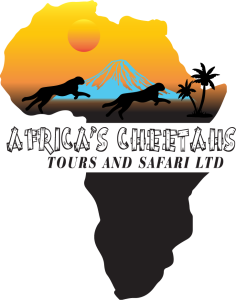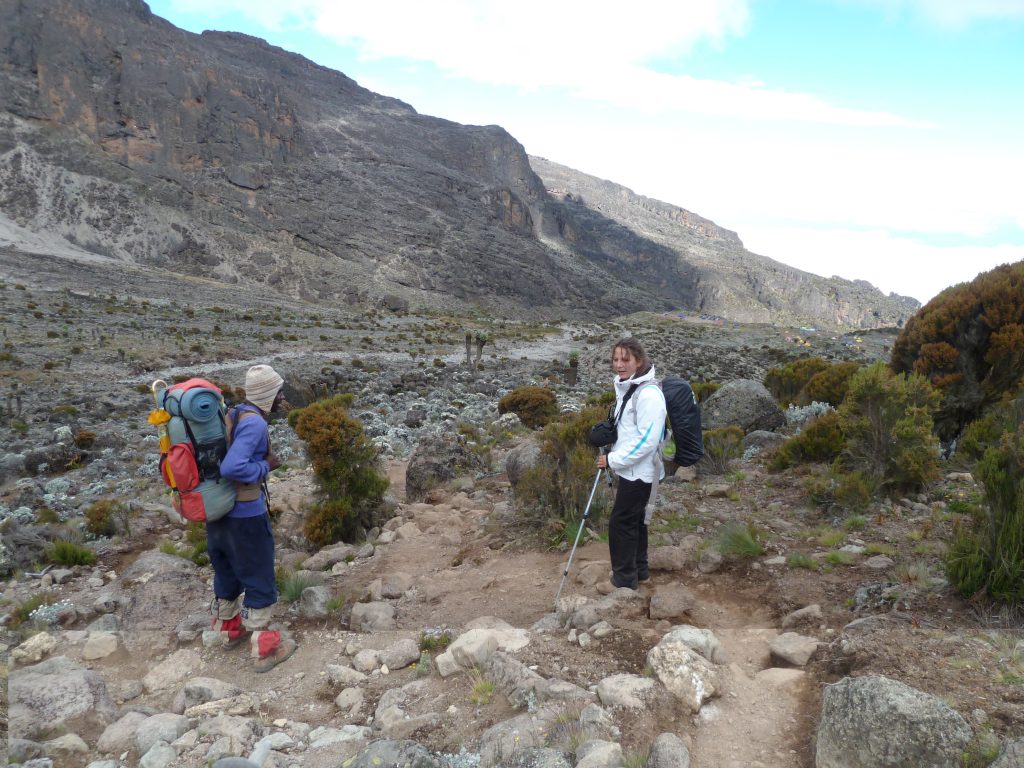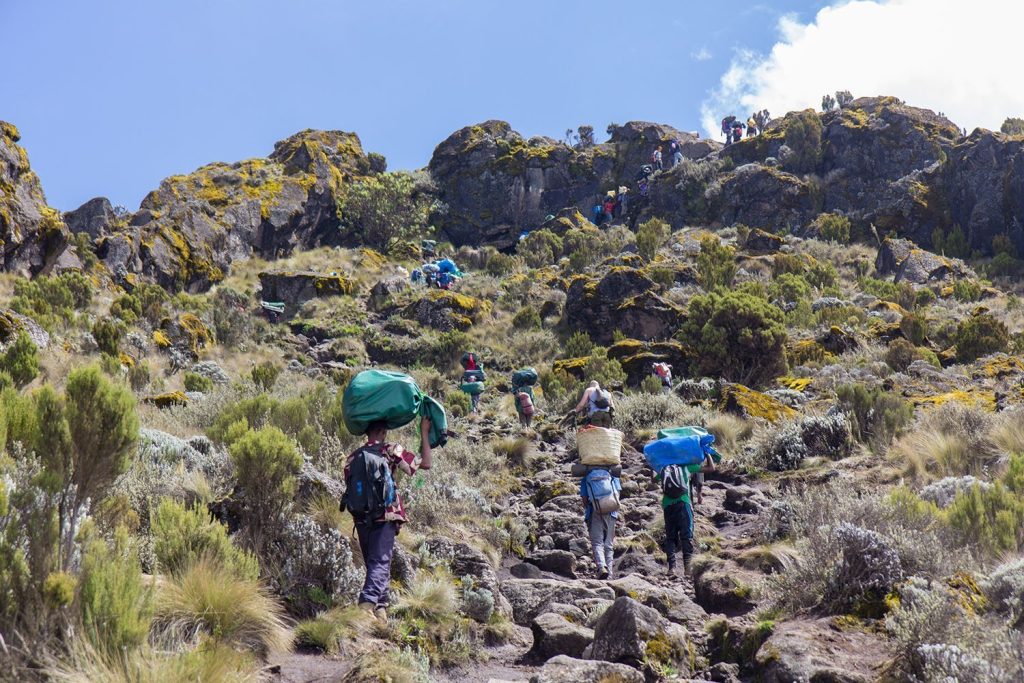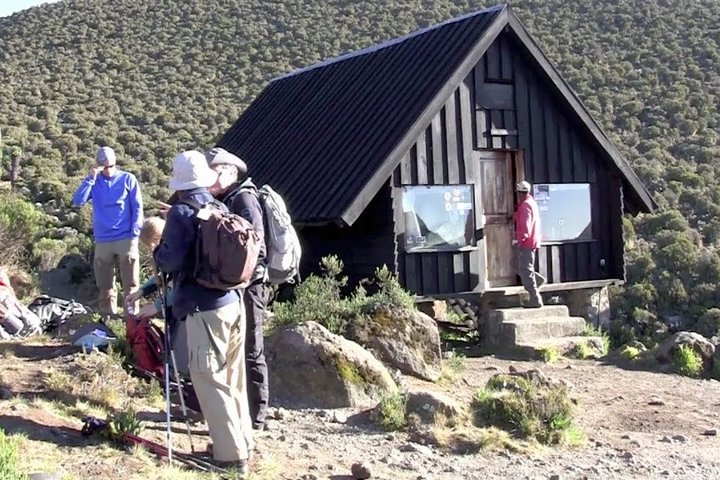Marangu Route
MARANGU ROUTE 6 DAYS, 5 NIGHTS’.
Marangu (“Coca Cola”) Route ** Known as the “Coca-Cola” route, the Marangu route is a classic trek on Mount Kilimanjaro. It is the oldest, most well-established route. Many favor the Marangu route because it is considered to be the easiest path on the mountain, given its gradual slope. It is also the only route which offers sleeping huts in dormitory style accommodations. The minimum days required for this route is five, although the probability of successfully reaching the top in that time period is quite low. Spending an extra acclimatization day on the mountain is highly recommended when climbing Kilimanjaro using the Marangu route. However, despite its immense popularity, we avoid leading climbs on the Marangu route. The route has the least scenic variety of all the routes because the ascent and descent are done on the same path and it is the most crowded route for that reason. Marangu is favored only during the rainy season, where the hut accommodations are preferred over wet ground, or for those who only have five days to climb Kilimanjaro

Day 0:
Arrive Kilimanjaro International Airport, where you will be met by a Africas Cheetahs Tours and Safari Ltd representative and transferred to your hotel in Moshi. Evening briefing at hotel to prepare you for the climb ahead, followed by group dinner, an opportunity for the group to get to know each other before the climb.
- Six day’s option offers an extra day for acclimatization (recommended)
- 5 day option is also available.
- No camping required.
- Hut accommodation available at all camps.
Day 1:
- Marangu Gate (1,830 m/6,000 ft) to Mandara Hut (2,740 m/9,000 ft)
- Distance: 7 km,
- Hiking time: 4-5 hours
- Habitat: Montane Forest
You will be driven to Marangu Gate (1800m) to start walking through a thick rain forest which takes 3-4 hours to Mandara Hut (2727m). The Mandara Hut is situated on the forest belt border just below the Maundi Crater. Here you will have dinner and overnight.
Day 2:
- Mandara Hut (2,740 m/9,000 ft) to Horombo Hut (3,690 m/12,100 ft)
- Distance: 11 km
- Hiking time: 6-8 hours
- Habitat: Heath Land
After breakfast proceed walking 5-6 hours slowly following a path through the forest and then through the heather and moor land zone from where you can view Kilimanjaro’s two peaks and Moshi town with on way lunch box. Arrive at Horombo Hut (3,720m) for dinner and overnight stay.
DAY 3:
- Horombo Hut (3,720m/12,200ft) to Mawenzi Hut (4,600m/15,100ft)
- Mawenzi Hut (4,600m/15,100ft) to Horombo Hut (3,720m/12,200ft)
- Elevation Gain and Loss: 2,900 feet
- Hiking time: 6-8 hours
- Habitat: Heath Land
This is a very good day for acclimatization and see the amazing rocks (ZEBRA ROCKS) that seems just like a zebra stripe for 2-3 hours and get back to Horombo Hut for lunch dinner and overnight
Day 4:
- Horombo Hut (3,690 m/12,100 ft) to Kibo Hut (4,695 m/15,400 ft)
- Distance: 10 km,
- Hiking Time: 6-8 hours
- Habitat: Alpine Desert
A hard day climb to Kibo Hut (4703 m), 5-6 hours crossing the barren sub – Alpine terrain of the saddle between Mawenzi and Kibo peaks with picnic lunch box along the way. We relax on arrival to prepare for the next stage which begins shortly after, Mid night a very early start at around 12:00, follow the zigzag path up the scree slope, stopping frequently to catch breath in the starlit air. This is the steepest and most demanding section for the climb, taking five hours to Gilliman’s Point (5685m). Gillman’s Point offers great views of the Eastern Ice fields. See sunrise behind Mawenzi Peak illuminating the plain. Then walk a further 45 minutes around the crater and up to the highest point Uhuru Peak (5,895m), the roof of Africa where you will be rewarded with stunning views of the spectacular glaciers illuminated by the sunrise. Thereafter it is a 3–4 hour descent to Kibo Hut (3720m) with a rest at Kibo Hut on route. Dinner and overnight at Kibo Hut.
Day 5:
- Kibo Hut (4,695 m/15,400 ft) to Uhuru Peak (5,895 m/19,340 ft)
- Uhuru Peak (5,895 m/19,340 ft) to Horombo Hut (3,690 m/12,100 ft)
- Distance: 4 km ascent, 14 km descent
- Hiking Time: 10-15 hours
- Habitat: Artic
This is an easier day as you have the luxury of walking downhill on the way to the Horombo Hut for dinner and overnight
DAY 6:
- Horombo Hut (3,690 m/12,100 ft) to Marangu Gate (1,830 m/6,000 ft)
- Distance: 18 km,
- Hiking time: 5-7 hours
- Habitat: Rain Forest
This is also a much easier day as you have walking downhill from Horombo Hut way to the gate waiting vehicle at Marangu gate for transfer to Moshi.
END OF TREK.





